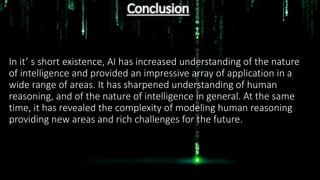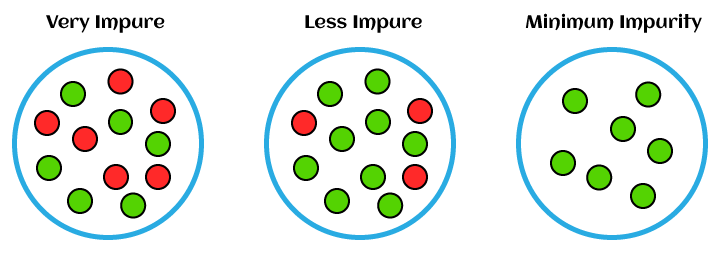Artificial Intelligence has revolutionized the way we approach problem-solving, and its applications are being felt in almost every sector. One of the fundamental concepts in AI is the successor function, which is used in many AI algorithms to determine the next possible move or state. The successor function is an essential component of search algorithms, and many AI systems rely on it to make decisions.
In simple terms, the successor function is a function that takes the current state of a problem and returns all possible states that can be reached from that state. The successor function is used in many AI applications, including game-playing, scheduling, and route planning. It is a crucial tool in developing intelligent systems that can learn, adapt, and make decisions based on the available data. In this article, we will explore the concept of the successor function in AI, its applications, and how it is used in various AI algorithms.

What is a Successor Function in Artificial Intelligence?
The successor function is a term used in Artificial Intelligence (AI) to refer to a function that determines the next state, given a certain action and an initial state. It is a fundamental concept of AI, and is used to model how agents interact with their environment. The idea is that a given action will cause a transition from one state to another, and the successor function can be used to model this transition.
How Successor Function Works in Artificial Intelligence
The successor function works by taking an initial state and an action as inputs, and then computing the next possible state. This next state is known as the successor state, and it is determined by the action that was taken. The successor function is used to determine how an agent will respond to a given action. For example, if the agent is in a certain state and takes a certain action, the successor function can be used to determine the next state that the agent will move to.
State Space Representation
The successor function is often represented in the form of a state space. A state space is a graph that contains all of the possible states that an agent can move to, as well as all of the possible actions that can be taken in each of those states. The state space is used to model the agent’s environment, and the successor function is used to determine how the agent will move between those states.
Search Algorithms
The successor function is also used in the development of search algorithms. These algorithms are used to find the optimal path from a starting state to a goal state. The successor function is used to determine which state is the best one to move to in order to reach the goal. By using the state space, the search algorithm can determine which action to take in order to reach the goal state in the most efficient way possible.
Planning Algorithms
The successor function is also used in the development of planning algorithms. Planning algorithms are used to find the best course of action in order to reach a goal state. These algorithms use the successor function to determine the best action to take in order to reach the goal. By using the state space and the successor function, the planning algorithm can determine the best path to take in order to reach the goal state in the most efficient way possible.
Reinforcement Learning
The successor function is also used in the development of reinforcement learning algorithms. These algorithms are used to determine the best way to respond to a certain input in order to reach a goal state. The successor function is used to determine which state is the best one to move to in order to reach the goal. By using the state space, the reinforcement learning algorithm can determine which action to take in order to reach the goal state in the most efficient way possible.
Conclusion
In conclusion, the successor function is an important concept in Artificial Intelligence. It is used to model how agents interact with their environment, as well as to determine the best path from a starting state to a goal state. The successor function is used in the development of search algorithms, planning algorithms, and reinforcement learning algorithms. By using the state space, the successor function can be used to determine the best action to take in order to reach the goal state in the most efficient way possible.
Frequently Asked Questions
A successor function is a concept in Artificial Intelligence that represents the possible states a system can reach from a given state. In AI, the successor function is used to represent the transitions between states in a state-space search problem.
What is a Successor Function?
A successor function is a function used in Artificial Intelligence to represent the possible states a system can reach from a given state. In AI, the successor function is used to represent the transitions between states in a state-space search problem. The successor function takes a state as an input and produces all possible states that can be reached from that state. It is an important component of many AI search algorithms, like A*, Dijkstra, and Breadth-First Search.
In AI, the successor function is used to represent the transitions between states in a state-space search problem. The successor function takes a state as an input and produces all possible states that can be reached from that state. This allows the AI to explore the state-space and find solutions to problems.
What Are the Uses of a Successor Function?
A successor function is used in Artificial Intelligence to represent the possible states a system can reach from a given state. This allows the AI to explore the state-space and find solutions to problems. The successor function is used in many AI search algorithms, such as A*, Dijkstra, and Breadth-First Search. These algorithms use the successor function to explore the state-space and find optimal solutions.
The successor function is also used in pathfinding algorithms, such as A* and Dijkstra. These algorithms use the successor function to explore the state-space and find the shortest path between two points. The successor function is also used in planning algorithms, such as the STRIPS algorithm. This algorithm uses the successor function to plan a sequence of actions that will lead to a desired goal.
What Are the Advantages of Using a Successor Function?
The main advantage of using a successor function is that it allows Artificial Intelligence to explore the state-space and find solutions to problems. The successor function is used in many AI search algorithms, such as A*, Dijkstra, and Breadth-First Search. These algorithms use the successor function to explore the state-space and find optimal solutions.
The successor function is also beneficial because it can be used to plan a sequence of actions that will lead to a desired goal. The STRIPS algorithm uses the successor function to plan a sequence of actions that will lead to a desired goal. The successor function can also be used in pathfinding algorithms, such as A* and Dijkstra. These algorithms use the successor function to explore the state-space and find the shortest path between two points.
What Are the Disadvantages of Using a Successor Function?
The main disadvantage of using a successor function is that it can be difficult to define the successor function for a given problem. The successor function must be defined accurately in order for the AI to find solutions to the problem. Additionally, the state-space may be too large for the AI to explore, leading to inefficient solutions.
Another disadvantage is that the successor function may not be able to explore all states in a given state-space. Therefore, the AI may never find the optimal solution to the problem. Additionally, the AI may be unable to explore certain states due to the complexity of the successor function. This can lead to inefficient solutions.
What Are Some Examples of Successor Functions?
Some examples of successor functions include the A* algorithm, Dijkstra’s algorithm, and the STRIPS algorithm. The A* algorithm uses a heuristic function to find the optimal solution to a problem. Dijkstra’s algorithm uses a priority queue to explore the state-space and find the shortest path between two points. The STRIPS algorithm uses a planning graph to plan a sequence of actions that will lead to a desired goal.
In conclusion, the successor function plays a vital role in artificial intelligence. It is a mathematical function that is used to generate the next possible state of a system or problem. It is commonly used in various AI algorithms, such as in search algorithms, game playing algorithms, and planning algorithms. The successor function allows AI systems to analyze and predict future outcomes, making it a crucial component in the development of intelligent systems.
Overall, the successor function is an essential tool for AI developers and researchers. Its application in various AI algorithms has led to the creation of intelligent systems capable of solving complex problems and making informed decisions. As AI technology continues to evolve, the successor function will undoubtedly remain a crucial component of its development. Its ability to generate future states and predict outcomes will continue to shape the way AI systems are designed, implemented, and utilized in various industries.



